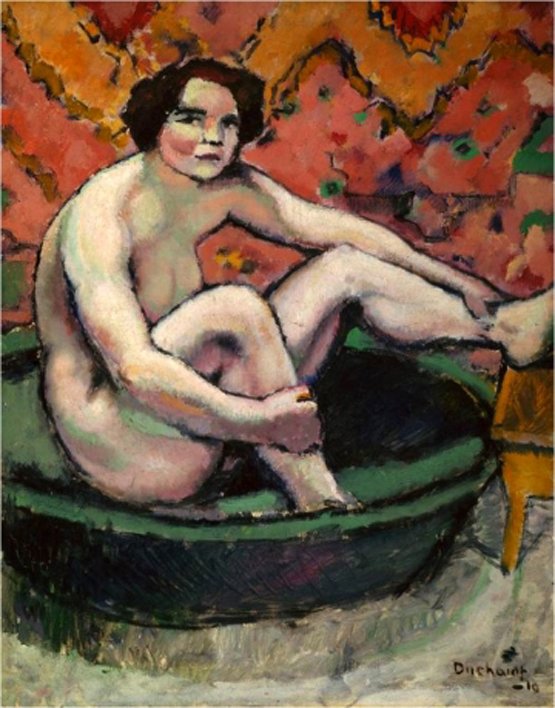The film industry needs its products to be defined by genres in order to reach its target audience. Most films with female protagonists are defined as “chick flicks”, and targeted to reach a female audience. The existence of this genre reinforces the disparity between how male and females are portrayed by the film industry.
On Genre and Industry
Every film carries a speech. It’s the nature of cinema as an industrial art to do so. According to Ismail Xavier [1], “Cinema, as a speech composed by images and sounds is, strictly saying, always fictional, in any of it modalities; always a fact of language, a speech produced and controlled, in different ways, by a producing source.”
More than any other form of art, cinema has always been strictly connected to the industry. There are often millions of dollars involved in the process of making a movie. It is a massive form of art that costs a lot and is also able to bring a large profit when it reaches a high number at the box office.
By extension, it also seems reasonable to keep on producing films that the audience is more likely to watch. That’s why there are always audience surveys and the reason why Hollywood when finding a profitable genre explores it to the point of exhaustion.
A genre as it can be found at the Oxford Dictionary, is a “style or form of art, music, or literature”. When one goes to the movies, it is usually easy to find out to which genre or sub-genre the film they are about to see belongs to. If the poster has space ships in it, it is probably a sci-fi. If there’s a strong guy holding a gun, it’s an action movie, and so on. That happens due to the fact that anyone who is slightly used to see films, knows how a genre works by its own experience. Every genre has its rules and conventions.
Once that the genre has proved to be a success or has a high chance of reaching its targeted audience, it seems reasonable to keep on obeying its rules and conventions as a safe way to communicate to its audience. It also seems to make sense to claim that this particular genre should exist for industrial purposes.
The Chick Flick Genre
One genre that has been largely explored by Hollywood since the 40’s is the Chick Flick genre. It is difficult to find a precise definition to it but as stated by Suzanne Ferriss and Mallory Young [2] it can be defined “in the simplest, broadest sense as commercial films that appeal to a female audience”.
A chick flick is also easy to be recognized by its poster. Usually, it has at least two of the following elements: a touch of pink; fancy and colorful letters; the female protagonist on the foreground and the male love interest on the background.
A chick flick has “more dialogue than special effects, more relationships than violence.” [3] It has a female protagonist, who has to fight against some disparity and is usually struggling with relationship problems.
Most times these films carry the moral that women live happily ever after when they get to find true love, such as “What If”, “27 Dresses”, “The Wedding Planner” and so on. A large percentage of the chick flick films, especially of its sub-genre chick lit, end up with a marriage scene, which is, to say the least, a complicated statement to be made.
Other times, chick flicks present a strong female protagonist and a strong chorus of female secondary characters. But as the movie progresses the protagonist has to change of to adapt herself in order to find love, to be noted by her love interest, or to fit into her lover’s life, ie: “The Prince & Me”, “Sabrina”, “Maid in Manhattan”, “Pretty Human”, “The Princess Diaries” are somehow, all reproducing the Cinderella Story.
Ninety per cent of the time, the protagonist is a stunningly pretty lady, who also happens to be young, white and skinny. But she has to have a flaw ( “a klutz”), in order to make her more human and therefore, more relatable to the audience. “Miss Congeniality” is probably the most obvious example. Yet she necessarily has to be physically stunning, in order to keep the current beauty pattern alive. Also, because the industry theorizes that women go to the movies in order to see what they want to be, instead of what they are. Or, being more accurate, to see what the industry wants them to believe they have to be.
Or chick flick films can be simply good. They can show the empowerment of women, with strong female characters, or women who throughout the film free themselves from forms of oppression that they have been suffering, and so on, as seen in “Erin Brokovich”, “Thelma and Louise”.
Of course, as it happens in every genre, it will always be possible to find excellent, terrible and contradictory films amongst them. The issue being discussed is not the individual speeches carried by specific examples, but the speech that is carried by the genre itself.
To begin with, the nomenclature “chick flick” is, by itself, offensive. It carries the meaning that films with female protagonists are interesting only to a female audience, reinforcing the idea that films that have men, as protagonists are universal. However, those who have lots of women in it are “chick flicks”, and therefore, a niche genre.
Also, the lack of definitions and rules should be enough to justify that this genre has no reason of being. What similarities films such as “Legally Blond”, “Breakfast at Tiffanys” and “Terms of Endearment” carry with each other, apart the fact that they all have female protagonists?
Since the 20’s, the film industry has been controlled mostly by men. As said by Marian Evans;
“The truth is that all the chick culture chick flicks released are the outcomes of business decisions based on beliefs that women who write and direct films present a greater economic risk than men (…) women who write and/or direct are less then 20 percent of them. Women who want to represent their own lives in the postfeminist times struggle to have their business cases accepted”. [4]
Which means that a comedy lead by male protagonists is a comedy. But a comedy lead by women belongs to a different genre. It’s a “chick flick”. A drama lived by a man, is a drama. But the same drama, when lived by a woman, it’s a “chick flick”.
Most of the time, both men and women do enjoy chick flick films. So, why does the industry keep on caging them into a specific genre that can only be watched by a certain audience? Surely, both men and women get married. Yet by some reason, films that have marriage scenes in it are only targeted as being interesting to women.
It is the same distorted logic that says that boys have to play with cars and girls, with dolls. It’s a mercantile mechanism that needs to cage people into genres, boxes, in order to maintain the industrial current logic. Women cannot watch sci-fi or action films. They should watch only chick flicks. Men can watch any genre. Being so, why would they want to see “chick films”?
It seems possible to affirm that the own existence of the genre is a proof of sexism, and therefore, it is important for this genre to continue on existing. Once that without its existence, perhaps women would not be portrayed in films at all. But it seems hard to see oppression as a form of resistance.
The chick flick genre is of course, profitable, once that it has as an audience fifty percent of humankind. Therefore, when a genre has such a large reach, it should not be seen as genre any longer, since this concept is essentially connected with the niche idea. Women are not a niche and cannot continue to be seen as such.
Chick Flicks, as a genre, carry a clear speech: there’s a huge gap between how men and women are portrayed and seen by the film industry. Men can be seen as human beings with problems, quests and stories that are interesting to any audience. As for women, when having anxieties, dilemmas, interests, and a journey… Well, that’s a “chick flick”.
[1] – Ismail Xavier, “O Discurso Cinematográfico: A Opacidade e a Transparência”, Paz e Terra, 2005. Extractfreely translated to english by the author.
[2] – cited on [3].
[3] – Mariane Evans, “Review Essay: Suzanne Ferrissand Malory Young – Chick Flicks: ContemporaryWomen at the Movies”, 2008.
[4] – cited on [3].
Tainá Mühringer has a Bachelor degree in social communication specialized in Film from Fundação Armando Alvares Penteado (FAAP). She works as a screenwriter in the city of São Paulo, Brazil.






